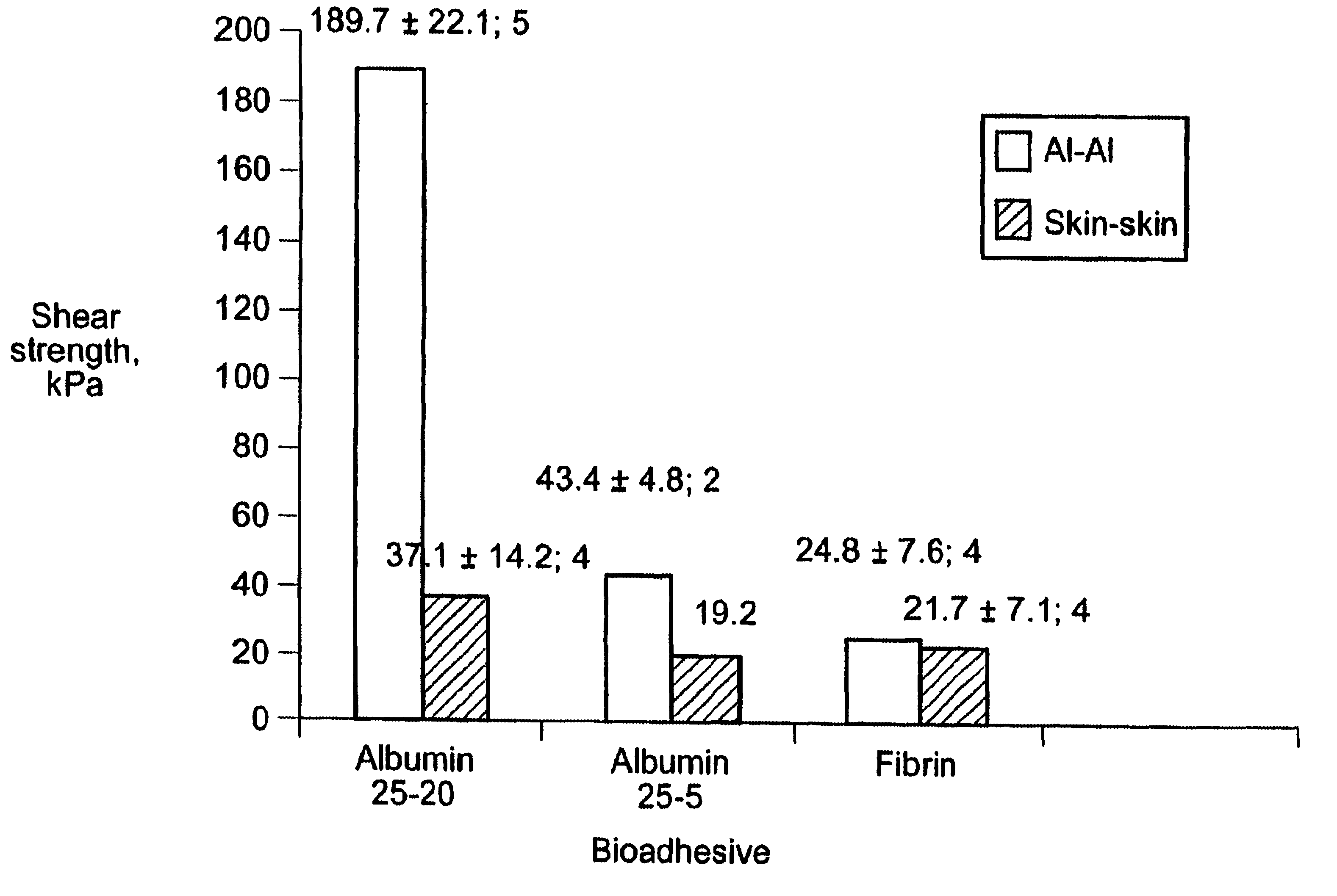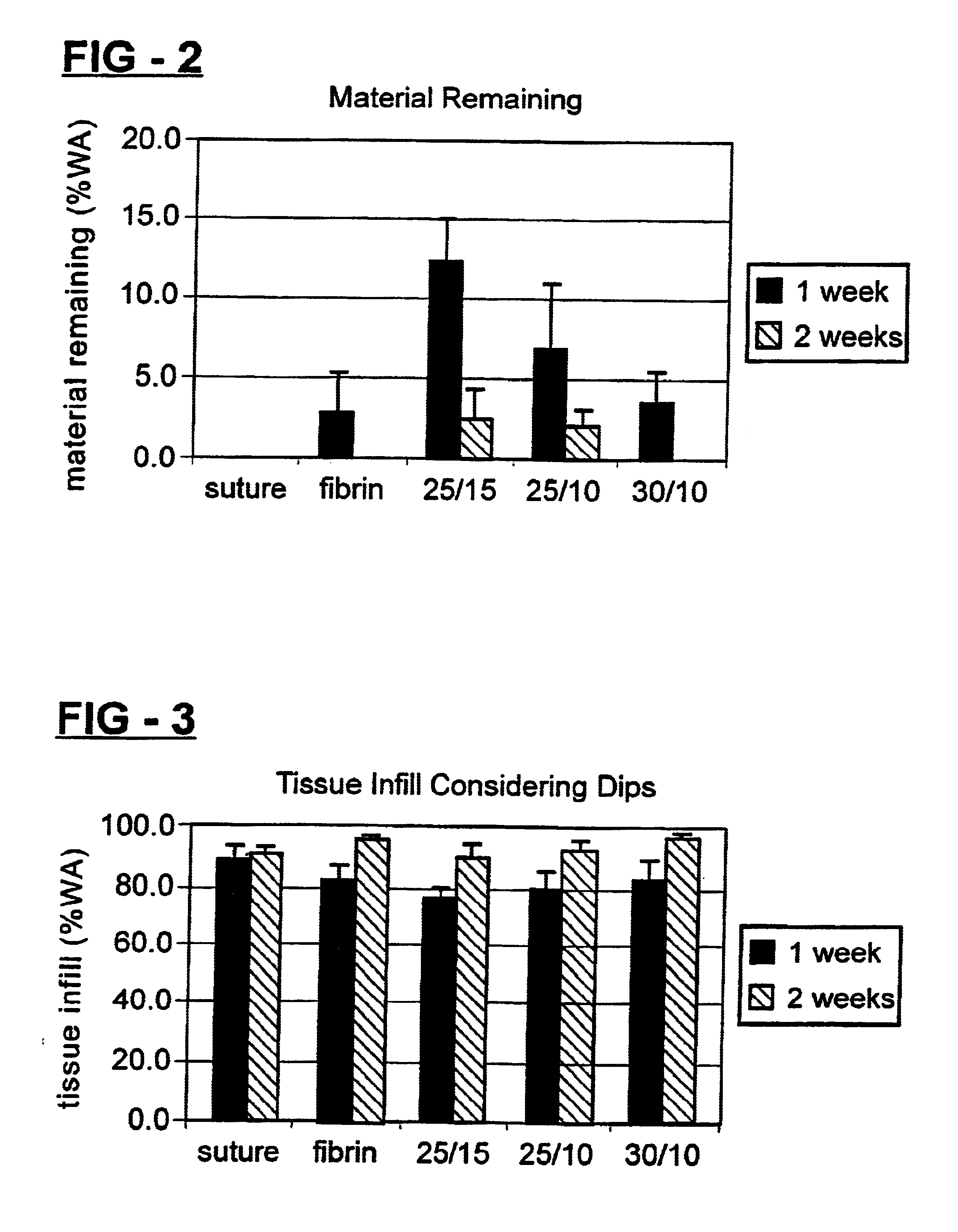Porous tissue scaffolding materials and uses thereof
- Summary
- Abstract
- Description
- Claims
- Application Information
AI Technical Summary
Benefits of technology
Problems solved by technology
Method used
Image
Examples
example 1
Manufacture of Porous Material
Pooled donor fibrinogen and bovine thrombin was obtained from the American Red Cross blood bank. The fibrinogen cryoprecipitate was re-suspended at 37.degree. C. with 3.3 ml of ddH.sub.2 O to obtain a concentration of 120 mg / ml. The thrombin solution was prepared at 1000 units / ml in a 80 mM CaCl.sub.2 dihydrate solution. The fibrinogen was mixed with thrombin in a 1:1 ratio, giving an ultimate fibrinogen concentration of 60 mg / ml.
Polyethylene glycol (PEG)(MW=20,000 Daltons) beads of 100-22 .mu.m diameter (Shearwater Polymers, Inc. Huntsville, Ala.) were added to the thrombin. The 1.2 ml of PEG corresponded to a total of 12% by volume addition to the final fibrin clot. This volume was chosen because studies have indicated that 12% volume of the beads ensures interconnecting porosity, (Mikos et al., 1993).
example 2
In Vivo Testing
Five 6 mm diameter ulcers up to the depth of bare cartilage were created in each rabbit ear after routine surgical preparation, using a trephine. There were four rabbits in the study. There were two periods of study (four and eight days), with two rabbits in each study period. There were fifteen ulcers in each time period, five of which were treated with a porous fibrin scaffold, five with a non-porous fibrin scaffold and five were untreated to serve as controls.
All the ulcers were handled using sterile procedures to prevent infection. After the rabbits recovered from surgery, they were housed under veterinary supervision and returned to individual cages where they were checked and fed daily. Clinical evaluations were made daily and the ulcers were monitored. At the predetermined day, the rabbits from each time period were sacrificed by barbiturate overdose. The ulcer and surrounding tissues were removed. The specimens were then placed in an acid alcohol fixative for ...
example 3
In Vivo Dose Response of Acidic Fibroblast Growth Factor Delivered Through a Porous Fibrin Scaffold on Wound Healing
In order to enhance the scaffolding of a biomaterial both the bioactivity and configuration of the implant was examined. Parameters of bioactivity include rate of implant degradation as well as the use of incorporated biochemical factors such as growth factors. Parameters of implant configuration includes both surface roughness and porosity. A porous fibrin scaffold with a pore size of 100-200 .mu.m initiated an enhanced fibroblastic and angiogenic response over the control ulcers.
PUM
| Property | Measurement | Unit |
|---|---|---|
| Length | aaaaa | aaaaa |
| Fraction | aaaaa | aaaaa |
| Fraction | aaaaa | aaaaa |
Abstract
Description
Claims
Application Information
 Login to View More
Login to View More - Generate Ideas
- Intellectual Property
- Life Sciences
- Materials
- Tech Scout
- Unparalleled Data Quality
- Higher Quality Content
- 60% Fewer Hallucinations
Browse by: Latest US Patents, China's latest patents, Technical Efficacy Thesaurus, Application Domain, Technology Topic, Popular Technical Reports.
© 2025 PatSnap. All rights reserved.Legal|Privacy policy|Modern Slavery Act Transparency Statement|Sitemap|About US| Contact US: help@patsnap.com



